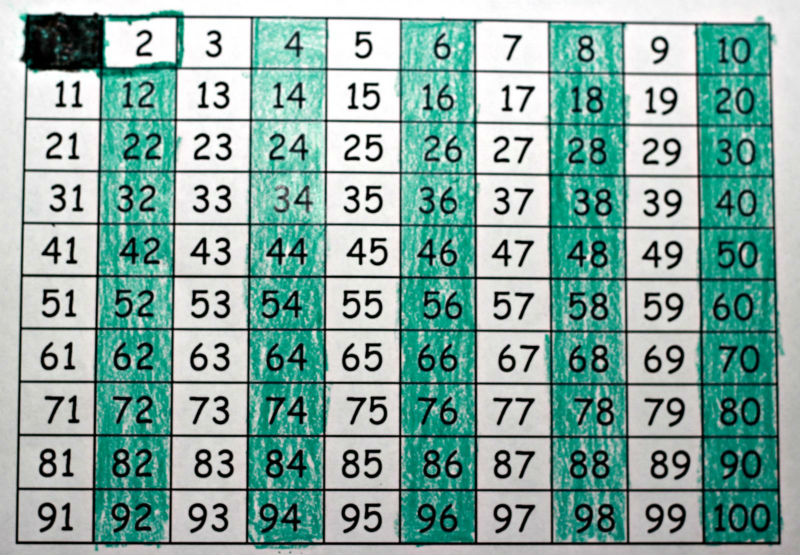Circles of friends, ants clashes and Russian roulette: unusual questions at interviews in financial companies

Recently, large companies are moving away from the practice of interviewing strange questions to more “human interviews.” For example, in 2016, Google abandoned a number of tricky questions that have puzzled applicants for years. The questions that are asked at interviews in large companies in the financial sector were told by the Efinancial Careers edition using a test. We have prepared an adapted version of this material.
What is expected from candidates in finance
Because of the tendency to automate most of the tasks in the financial sector, companies increasingly need people who can not only solve problems, but also have knowledge of technology. They need people who can divide a difficult problem into its component parts and come up with a logical solution for it.
')
The new CB Insights report shows that almost half of the open vacancies at Goldman Sachs are now in the technology department. And even if the candidate is interviewed in the technology, risk or strategy department, he will still be asked questions related to problem-solving skills.
To pass the interview successfully, you need to be able to answer the questions listed below. They were all asked during interviews at banks like Goldman Sachs and hedge funds Brevan Howard and Citadel in the past 12 months.
Go!
Dice

Question : "What is the average result when throwing a hex dice?"
Variants of answers:
- 2
- 3
- 3.5
- four
Correct answer
3
Decision:
Russian roulette

Question : “You are playing Russian roulette. In the drum of a revolver there are only six cells, in two of them, following one after another, there are cartridges. You turn the drum, put the gun to the temple, pull the trigger and survive. What will you do next? Pull the trigger again? Or will you start turning the drum again and only then shoot? ”
Variants of answers:
- Shot ;
- I'll check the drum .
Correct answer
one
Solution : If you crank the drum and then shoot, the probability of death will be 2 to 6 or 1 to 3. If you shoot right away, then the chance of survival will be 3 to 4, because two of the six options (in which the previous cell was charged) are excluded due to the fact that the previous camera was empty.
Circles of friends

Question : If friendship had a transitive property, then imagine that person A would be a friend of B, and B would be a friend of C, then A would also be a friend of C. Let's call this logic a circle of friendship. Based on the following matrix, where the columns in each row have either “N” or “Y”, and “N” represents the category “not friend”, and “Y” represents “friend”, how many friendship circles can you make? YNY, NYN, YNY
Variants of answers:
- one
- 2
- 3
- 6
Correct answer
2
Solution : The first and third rows are friends, the third row is not subject to the logic described. Usually, to solve this problem, you need to write a piece of code.
Ants

Question : Three ants are in the three corners of an equilateral triangle. Each of them chooses a random direction and begins to move along the edge of the triangle. What is the probability that none of the ants will collide with the others?
Variants of answers:
- 25%
- 33%
- 15%
- 66%
Correct answer
one
Solution : Ants will avoid collisions if everyone decides to move in one direction (clockwise or counterclockwise). Consequently, the probability of no collision is:P ( ) + P ( ) = 0,5 * 0,5 * 0,5 + 0,5 * 0,5 * 0,5 = 0,25.
Drunk man

Question: A drunk man is standing on a cliff. If he takes a step forward, he will fall down from the cliff. He takes random steps either to the side or away from the cliff. The probability of moving away from the rock is 2/3, and the probability of approaching the rock is 1/3. After three steps taken, what is his chance to die?
Variants of answers:
- 66%
- 22%
- 41%
- 18%
Correct answer
3
Solution : The three steps taken involve 27 different ways to further develop the situation. The probability of falling is: 1/3 + 2/27, that is, it is 11/27 or 40.7% of the probability of falling off a cliff.
Crossing the river

Question : Do you have a series of time units consisting of the following integers: [1,2,4,7]. You need to ship this row to the other side of the river for a minimum period of time, with only two whole numbers traveling in a boat at any one time. What is the minimum time you can complete the task?
- 21 units of time;
- 14 units of time;
- 28 units of time;
- 25 units of time.
Correct answer
2
Solution : If {1, 2} move in a boat together, then they only need 2 units of time (not 1 + 2). In this case, you need to forward {1,2} to the other side, and then bring 1 back. The elapsed time will be 2 units (crossing) + 1 (return). Then send {4, 7}, and 2 will go back (time 7 (shipment) + 2 (return)). Then send {1, 2} again (travel time 2 (transfer)). The total time will be: 2 + 1 + 7 + 2 + 2 = 14 .Eggs falling from a skyscraper

Question : You are in a 100-story building and hold two eggs in your hands. If you throw an egg out of the window of one of the floors, it will not break if the floor number is less than X, and it will always break if the floor number is equal to or greater than X. What strategy would you use to determine X to break the minimum number eggs?
- Throw the first egg from the 14th floor. Climb to the 27th floor, if it does not break, then climb to 39;
- Throw an egg from the 50th floor and pick it up from there;
- Throw the first egg from the 10th floor, then each time go up 10 floors above;
- Throw the first egg from the 25th floor. Then go up to the 30th floor, if it is not broken, and then - to 40.
Correct answer
one
Solution : The first egg will be thrown from floor n. If it breaks, you can go through the previous (n-1) floors, one after another. If it does not break, then, instead of going higher, we should exclusively go down to the (n-1) floors and the next floor, which we should try - n + (n-1). Similarly, if this strategy does not work, we will need to climb to the floor n + (n-1) + (n-2), then to n + (n-1) + (n-2) + (n-3). It is necessary to reduce the distance between the floors, until it is only one floor. In the end, you get the following equation for a 100-story building: n + (n-1) + (n-2) + (n-3) + (n-4) + ... + 1> = 100
Prime numbers

Question : 16p + 1 = x 3 , where p is a prime number. What is x?
- 13
- 37
- 29
- 17
Correct answer
four
Solution : 16p = x 3 -1 = (x-1) (x 2 + x + 1). So we have p = (x-1) (x 2 + x + 1) / 16. Therefore, x 2 + x + 1 must be an odd number, and x-1 must be a multiple of 16. Then x-1 = 16 - this is the only solution.
Other materials on finance and stock market from ITI Capital :
- ITI Capital Educational Resources
- Analytics and market reviews
- Futures, indices and IPOs: how exchanges really work and why they are needed
- Top 10 books to understand the stock market device
- Futures, indices and IPOs: how exchanges really work and why they are needed
- Infrastructure of the Russian securities market (brief educational program)
- How-to: robots and brokerage trading system APIs
Source: https://habr.com/ru/post/339740/
All Articles